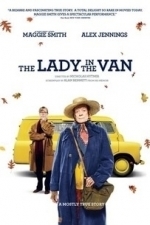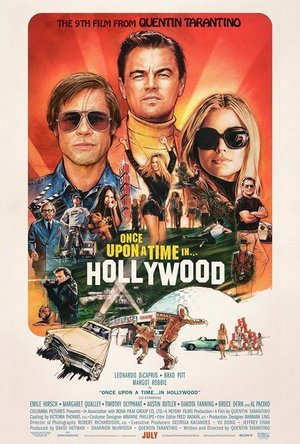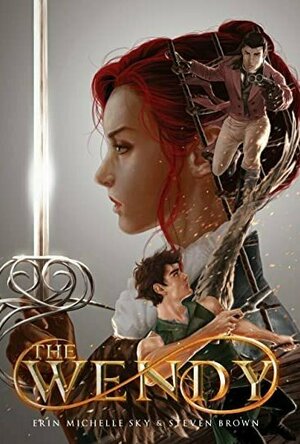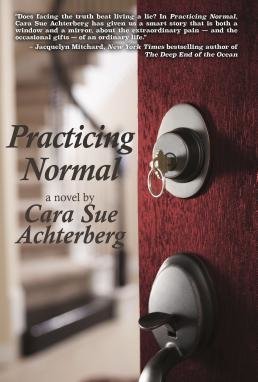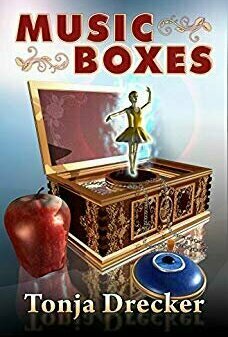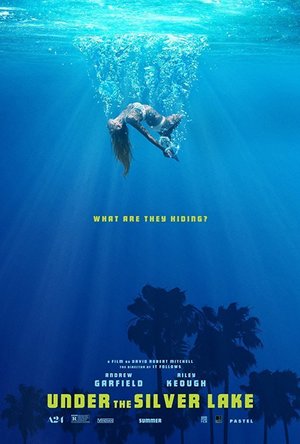Movie Metropolis (309 KP) rated The Lady In The Van (2015) in Movies
Jun 11, 2019 (Updated Jun 11, 2019)
With a dull, mild curiosity.
Despite being from the viewpoint of two Alan Bennetts, described as one being the writer and the other living the life, the main character is Miss Sheppard, the lady in the van. The film insists that we should be interested in her mysterious life, her past as a pianist and a nun, and why she chooses to live in the van, but throughout most of the film I was only thinking “Oh, let’s just go back and hear Alan Bennett be cynical some more.” The words are witty and sharp, but it’s mostly said about things we don’t care about. Miss Sheppard is a flat, mostly dull character, and the audience is unwillingly handcuffed to her.
The highlight of the film is its acting, with the cast being a veritable who’s who of Britain’s finest talent, and James Corden. What dimension Miss Sheppard has is provided almost entirely by the volatile yet vulnerable performance by Maggie Smith, and Alex Jennings is as real an Alan Bennett as the actual Alan Bennett. Even in the small roles, everyone from Roger Allam to Gwen Taylor manage to force themselves to shine. The only bad performance is from, of all people, Jim Broadbent, who pops up to antagonise Miss Sheppard but appears less like a real human being and more like a cartoon supervillain. For a second, I thought the character’s name was Baron von Drakkhen.
But great players cannot save a bad game, and the story of the film is flat, predictable and boring. If you don’t immediately care about Miss Sheppard, then the film becomes more tedious and lifeless by the second. I guessed long before the end the mystery behind Miss Sheppard, but even if I hadn’t I would still have been bored due to the lack of any interest. The film believes that the existence of a mystery to be motivation enough to solve it, which just isn’t the case; I don’t know what John McCririck had for breakfast, but I’m not going to stare at his stools to find out.
Not helping matters is a very by the numbers direction by Nicholas Hytner. While not incompetent, there’s very little in the way of style or flair without being casual. The only parts that show any sort of imagination are the fourth wall breaks, but the best only happen towards the end. It’s a shame that the potential of having two Alan Bennetts and seeing the film from the perspective of the writer only starts to be explored as the film is drawing to a close. Otherwise, a robot could’ve directed this film.
Alan Bennett is a highly praised writer, and rightfully so, but The Lady in the Van just isn’t his best. The above-average but by no means stellar script is tied to a plot as lifeless and sluggish as a particularly lethargic sloth. If you’re really hurting to see Bennett at his best, it’d be a lot cheaper and a lot more entertaining to rent The Madness of King George or The History Boys or even one of The Secret Policeman’s Ball’s, plus you can order some pizza from your sofa. Otherwise, The Lady in the Van, unlike the real Miss Sheppard, can very safely be ignored.
https://moviemetropolis.net/2015/11/19/like-a-particularly-lethargic-sloth-the-lady-in-the-van-review/
Gareth von Kallenbach (980 KP) rated Once Upon a Time in Hollywood (2019) in Movies
Jul 25, 2019
Once Upon a Time in Hollywood takes place in 1969 near the end of the golden age of Hollywood. Rick Dalton (Leonardo DiCaprio) is an aging star of Westerns trying to desperately remain relevant in a world that considers those even in their 30’s as ancient, much like the black and white film common even to that day. His stuntman and best friend Cliff Booth (Brad Pitt) is happy to go along for the ride. More of an assistant and better known as the man who got away with killing his own wife, Cliff is content with his role in the world and isn’t looking for the next big break.
You can’t have a Hollywood story in 1969 without involving one of the most brutal murders of the time, that of Sharon Tate (Margot Robbie) and the now infamous Charles Manson and his “family”. A dark cloud that would leave a lasting mark on Hollywood itself. Their presence reminds us of the chilling reality to the evil that is lurking just outside the amazing set pieces and bright lights of the city itself.
Brad Pitt and Leonardo DiCaprio do a phenomenal job as one would expect. It’s always interesting to watch a movie where the actor is portraying another character in an entirely different movie and Leonardo delivers in spades. Brad Pitt brings his usual lovable charm to the otherwise tough persona as Cliff, the dog loving, Bruce Lee ass kicking sidekick. The chemistry between the two is undeniable, displaying both touching and comedic undertones throughout. It’s almost surreal to think that they are portraying characters that do represent themselves in the real world. It’s hard not to make the comparison of Brad and Leo to their onscreen characters, as aging stars wondering what the future holds for them.
Tarantino does a marvelous job of transporting his viewers back to 1969. Everything from episodes of old television shows, to advertisements on the street envelop the viewers in the tie-dyed/hippy reality of what the 60’s was. It’s hard not to be impressed with the cinematography that has been so lavishly recreated before us. The streets, the cars, even the film itself all take their cues from the time period. Car scenes are shot with laughably fake backdrops at times to remind us exactly the types of effects that went into filming back in the day. It’s a mix of old school and new school filming that takes you from one reality and places you in another. Tarantino does his best to make the audience more than spectators to what is developing on screen and instead as active participants.
Once Upon a Time in Hollywood is a fairytale of sorts, of what made Hollywood so special back in the 60’s. It lacks much of the brutal nature that has become second nature to Tarantino films, and those who are going to see it for its brutality will likely be very disappointed. It’s a film that is incredibly difficult to talk about without spoilers, because outside the general plot synopsis the viewer is left with more questions than answers. The film is long, coming in at two hours and forty minutes, and there are scenes that tend to drag on a little longer than necessary. Thankfully though, Tarantino has weaved a story of what was and what could have been, if Rick and Cliff both had existed…Once Upon a Time in Hollywood.
4 out of 5 stars

I Like Books - 37 Picture Books for Kids in 1 App
Education and Book
App
"WOW... 37 stunning picture books for kids in one app. This is a MUST have for every parent with...
Lottie disney bookworm (1056 KP) rated The Wendy (Tales of The Wendy #1) in Books
Dec 29, 2020
Enter Erin Michelle Sky and Steven Brown with their Tales of Wendy series to prove me wrong! The Wendy is the first in this series but I am already desperate to finish the second book, The Navigator before their third is released at the end of this year.
The Wendy, as you may expect, centres around Wendy Darling. However, this is not the prissy, mother-idolising figure I love to roll my eyes at: oh no, this Wendy Darling is growing up in the late 1700s in a London orphanage. In a world where her sole career option seems to be to become a mother, this feisty ten-year-old would prefer to “marry Davy Jones than grow up and look after babies”. This Wendy Darling is the one I have been waiting for.
Wendy’s dream is to join the Navy and sail the world. Unlike the rest of 18th Century Britain, she doesn’t see why being a girl should prevent this.
Therefore, over the years she becomes adapt at mathematics, science, navigation, marksmanship and swordsmanship. Nevertheless, despite being just as good, if not better than her childhood friend Charlie, he earns the rank of Officer in the British Navy whilst Wendy is assigned to the Home Office as a Diviner, one who can detect the presence of magic: a post to be filled only by women and dogs.
It is here that the reader meets John and Michael: Wendy’s “brothers-in-arms but in no way related, despite what you may have heard”. They are all stationed in Dover Castle, along with the Brigade’s dog Nana (who else?!). Their mission: to protect Britain from a magical threat, the innisfay or “everlost”, whom are known to kidnap orphans. Sound familiar?
The Wendy is definitely the best retelling of Peter Pan I have read so far. Despite the presence of all our favourite names, the characters are a far cry from their animated counterparts. Michael and John are wonderfully dry and sarcastic; Hook is powerful and attractive; Tink is a shape shifter; Peter, despite possessing a pair of wings and armour, is essentially the same and Wendy is an ambitious, feisty, yet beautifully flawed protagonist.
There are many little nods to the film which are greatly appreciated. Wendy “moving out of the nursery” means leaving the orphanage and gaining an apprenticeship and “thinking happy thoughts” as a means of flight is a practical joke by Peter to make Wendy smile.
Sky and Brown’s conversationalist style of writing makes this a very easy read, despite Wendy galloping all over the South of England with a variety of characters. It also allows the reader to really bond with Wendy and empathise with her and her struggles to achieve the employment she has longed so for since childhood.
As you may have gathered, sexism plays a large part in Wendy’s uphill struggle: as the only main female character she is constantly undermined in her ambition to become a sailor. Even when she proves to be useful in her post within the Home Office she is removed to the country “for her own safety”. Those men whom do not undermine her moon after her romantically: it truly is infuriating.
In some situations, this ingrained attitude was slightly heart-breaking but equally a sign of the times in which this novel was set: Wendy’s thoughts often returned to the propriety of her actions and the danger she experiences just through wearing “men’s clothes” is powerful moment. However, Wendy never lets these attitudes halt her ambition, ending her first novel as a true inspiration to girls following in her footsteps: Navigator Darling.
I can’t wait to discover the next step in her journey which, conveniently, lays past the second star to the right and straight on till morning!

Cooking Games Paradise Chef - Burger Food Maker
Food & Drink and Games
App
Cooking Games Paradise Food Maker & Burger Chef - Cook and serve tasty food recipes & learn how to...

Zombie Hunter: FPS Apocalypse
Games and Entertainment
App
The new real zombie war game with incredible 3D graphics. Your goal is to survive from the undead...
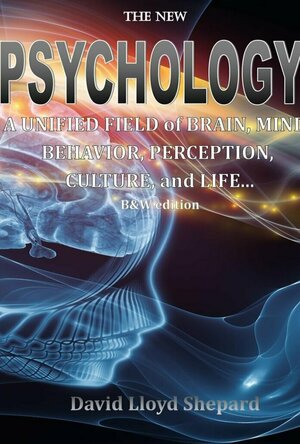
The New PSYCHOLOGY
Book
From the mind of genius to the suicide bombers of today’s news, from science to sex, understanding...
Kristy H (1252 KP) rated Practicing Normal in Books
Feb 13, 2018
I just have to preface my review to say that <i>I don't understand why more people don't know of and read Cara Sue Achterberg.</i> I read her last novel, [b:Girls' Weekend|28280644|Girls' Weekend|Cara Sue Achterberg|https://images.gr-assets.com/books/1453684219s/28280644.jpg|48328656], and it was so good. She also has a great twitter, fosters dogs, and is just so fun. Darn you, world!
Anyway, I liked the characters of PRACTICING NORMAL (or at least was drawn into their worlds) immediately -- there was no way I was ever going to like Kate's husband, though. Kate is so real--she is flawed, she is tough, she is a loving mom. She is no stock character. Achterberg does spot-on coverage of Kate's mother, Mildred, a crotchety old woman with borderline dementia. Mildred's love of her backyard songbirds is just awesome: you will laugh (and perhaps cry). There are also touching (and probably pretty realistic) interactions with her son. Meanwhile, her husband is just a piece of work.
<i>Achterberg has a way of making you empathize so deeply with her characters.</i> I felt so badly for Kate. Other times I wanted to shake her, wake her up, and get her out of her life. No matter what, I was completely invested in her story. She's relatable and will certainly appeal to the overworked, stressed moms of the world. (There's a moment where Kate wishes she could just have a temporary health issue and wind up in the hospital for a moment - where people actually care for her for once. Oh yes. Haven't we all been there--guiltily--for a minute or two?)
The POV varies mainly between Kate and Jenna--and about a quarter way through the story, we hear from that "louse" (as Mildred would say) Everett. I enjoyed how Achterberg used shorter sentences and simpler words when speaking as Everett. I'm sorry, but I could just never warm up to that guy. (Read it, you'll understand.) Now Jenna? She's a gem. A spitfire of a teen with the ability to see through the pretend layers everyone puts on. I fiercely wanted to protect Jenna--a testament to Achterberg's writing and this character she had created.
I was a bit irritated by Kate's sister Evelyn and her constant focus on bringing their deadbeat father back into their life (though that storyline picks up later), but Evelyn certainly stood for yet another thing poor Kate must deal with. I mean, seriously. This poor woman.
<i>Overall, I really enjoyed this one.</i> Much like GIRLS' WEEKEND, I am just amazed at how well Achterberg writes her characters and how quickly she draws you into their lives. I might have enjoyed GIRLS just a tad more, but only because I am more at the point of those women in my life (with younger kids) than Kate. I still really liked this novel. I would find myself just smiling at parts while I read it, because I was so taken by the characters. I was rooting for Kate and Jenna (and JT!) and, often, very much against Everett and Evelyn. It's truly a lovely reflection on the different kinds of love we have for others, and yes, the spectrum of normal. Highly recommend with 4+ stars.
I received a copy of this book from the publisher and Netgalley (thank you!) in return for an unbiased review. It is available as of 06/06/17.
You can read my review of Achterberg's previous novel, GIRLS' WEEKEND, <a href="http://justacatandabookatherside.blogspot.com/2016/04/ive-got-sunshine-and-few-good-friends.html">here</a>;.
<center><a href="http://justacatandabookatherside.blogspot.com/">Blog</a>; ~ <a href="https://twitter.com/mwcmoto">Twitter</a>; ~ <a href="https://www.facebook.com/justacatandabook/">Facebook</a>; ~ <a href="https://plus.google.com/u/0/+KristyHamiltonbooks">Google+</a></center>;
Heather Cranmer (2721 KP) rated Music Boxes in Books
Oct 24, 2019
Twelve year old Lindsey has just moved from Nebraska to New York City in order for her younger sister to attend Julliard. In Nebraska, she was part of a fantastic ballet school. In New York, she only gets to dance at the drab community center. When a world renowned ballerina offers to give her free ballet lessons in exchange for dancing in her secret midnight shows, Lindsey can't believe her luck. She's tired of living in her younger sister's talented shadow, so she quickly obliges. However, Lindsey soon realizes that dancers given private lessons are going missing. What's even more worrying is after they disappear, a music box appears with a little ballet figure that looks like the missing dancer. Is there something sinister about Lindsey's new ballet teacher, or can everything be put down to a coincidence?
The plot for Music Boxes reminded me of a Goosebumps book which is saying a lot because I loved the whole Goosebumps series by R.L. Stine. I was quickly absorbed in the story from the very first page. Believe me when I say my eyes devoured this novel. Although somewhat predictable for adults, its target audience of middle schoolers will enjoy the many plot twists peppered throughout the book. If the pacing was perfect for me, I believe it will also keep younger readers interested. One of my favorite things about the world of Music Boxes was the dance school and how magical it really was. Another good thing about Music Boxes is there aren't any cliff hanger endings. All loose ends are tied up by the end of the story.
Ballet dancers will really enjoy Music Boxes by Tonja Drecker as there are quite a few ballet terms in it. I had no idea what they meant, but it didn't distract from the story. It would have been nice to have a glossary of ballet terms or some kind of description for those of us who aren't dancers. Plus, the whole story mainly takes place in a ballet school. However, I think non dancers will really enjoy the story too as it has elements that anyone can relate to such as friendship, family, and doing the right thing.
For a middle grade novel, I felt that all the characters felt really alive. Although I would have liked some more back story for a few more of the dancers from Madame Destinee's school, I felt like the most important characters in the novel had enough back story. Lindsey feels like a character that most young girls will be able to connect with whether they are interested in ballet or not. With her conflicting feelings of listening to her parents and wanting to do what she loves, it's easy to see why Lindsey is a relatable character. Lindsey is also very brave and comes across as just a nice girl in general. Bridget, Lindsey's 8 year old sister, was my favorite character. She's a very talented violinist and the reason Lindsey and her family moved to New York City. Even though the family seemed more focused on Bridget, Bridget never came across as having an over-inflated ego or like she was better than Lindsay. I loved how sweet Bridget was and how she wanted what was best for Lindsey. Madame Destinee was an interesting character for sure. I never trusted her from the get go, but it was easy to see why a young child would especially when she's offering them their chance to shine at doing something they really love. I also loved Broussard because I love dogs!
Trigger warnings for Music Boxes include kidnapping, witches, minor violence, and death (although done in a non-scary way).
All in all, Music Boxes is a fantastic story full of intrigue and mystery that readers of all ages will enjoy. The plot is creepy in a good way, and the characters are written superbly! I would definitely recommend Music Boxes by Tonja Drecker to everyone aged 10+. Yes, the target audience is probably 10 - 13 year olds, but I really think everyone would enjoy it. It's written that well!
-
(A special thank you to Silver Dagger Book Tours for providing me with an eBook of Music Boxes by Tonja Drecker in exchange for an honest and unbiased review.)
Chris Sawin (602 KP) rated Under the Silver Lake (2018) in Movies
Jul 6, 2019
There’s a lot to digest with Under the Silver Lake. Not only is the story constructed on finding clues and deciphering the bizarre, but the film itself is also loaded with homage to famous music, film, and people. Nirvana, The Legend of Zelda, Nintendo Power, and Spider-Man are just a few references in the film and that doesn’t cover the blatant influence of films such as Rear Window or 2001: A Space Odyssey. What you have to ask yourself, and this is probably what makes the film so polarizing, is if what lays between the admiration for popular culture a worthwhile experience?
What you can appreciate is Andrew Garfield’s performance. Sam is so bored with his uneventful existence that he tries to find hidden meaning in everyday items. He is basically a stalker fueled by paranoia and consistent lusting of whatever woman is closest to him. When sex isn’t an option for Sam, he masturbates and somehow this becomes a common theme of the film. The first thing you ever pleasured yourself to is suddenly a conversation piece. Garfield has an unusual demeanor as Sam, but never really comes off as creepy. The method in which the story keeps snowballing into something bigger with more and more connections helps Sam’s case. Sam beats the snot out of a kid who keyed a giant penis ejaculating onto the hood of his black GT Mustang and you only seem to like him more because of it.
The fact of the matter is you also become invested in Sam’s discoveries. Despite what you feel about Under the Silver Lake as a film, it’s still unpredictable and intriguing even with its 139-minute duration. With its abrupt camera movements, a kamikaze squirrel, a serial dog killer on the loose, pets named after soda, the discovery of saltines and orange juice being one of the most unique combinations ever, a gory dream sequence, animated zine stories, people barking like dogs, the map on the back of a cereal box being the answer to everything, a seething hatred for the homeless, a way too impressive piano medley, and an almost unrecognizable Topher Grace as a reliable friend, Under the Silver Lake feels like it is overloaded with these overwhelmingly precise details that don’t necessarily lead to anything substantial.
On first watch, it’s impossible to decipher if Under the Silver Lake is destined to be a cult classic or a misguided neo-noir mystery. David Robert Mitchell knows how to introduce elements of comedy, mystery, and drama, but that final product is what leaves you scratching your head. Maybe this gets better with multiple viewings and you find more Easter eggs with each watch or everything connects differently in your head after knowing what direction the story is headed in. In the meantime though, Under the Silver Lake mostly feels like a nearly two and a half hour session of stoner ramblings that can’t decide whether to be Brick, Inherent Vice, or Southland Tales; even The Homeless King feels like a side story lifted from Terry Gilliam’s The Fisher King.
What’s happening directly in Sam’s world isn’t what matters most in Under the Silver Lake. He’s more worried about Sarah and Los Angeles than he is about not having a job or possibly a place to live in a matter of days. The outside world is far more interesting to Sam because it’s that, “The grass is always greener,” kind of mentality. Sam is consumed by Sarah because she is the one woman in the film he doesn’t get to sleep with. Having everlasting discussions of what your topless neighbor’s parrot is saying is far more humorous than revealing anything remotely personal. Becoming entangled in this crazy spider’s web of a conspiracy is far more interesting than living a boring existence. Sam makes the most out of nothing, literally. Under the Silver Lake is this spellbinding enigma of a film that is equally stimulating as it is mystifying.
